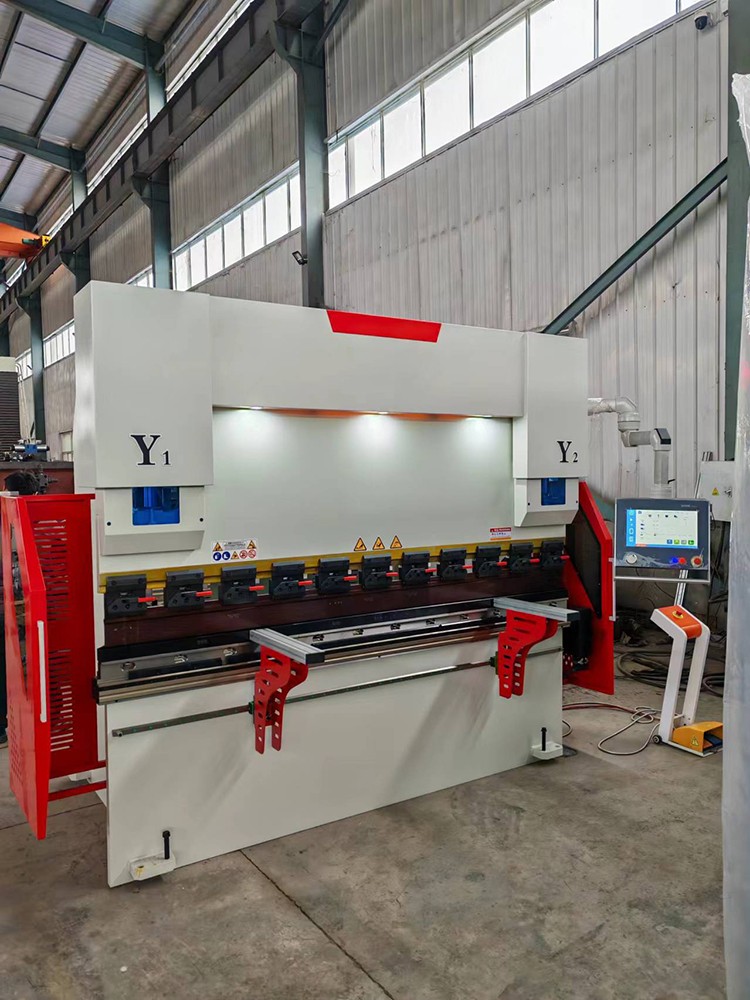

We are a professional bending machine manufacturer with over 10 years of industry experience. Today, we would like to introduce to you the easy fixes for worn out bending machine molds:

Bending machine mold in the long-term use process, due to the repeated extrusion and friction of the metal plate, edge parts are prone to wear. Wear of the mold will lead to a decline in bending accuracy, indentation on the surface of the workpiece and other problems, affecting the processing quality. For molds with light wear, simple repair methods can be used to extend service life and reduce production costs. The following are a few common easy repair programs.
1, Hand grinding repair
Hand grinding is the most basic repair method, applicable to the slight wear of the edge. The operation requires the use of oil stone or diamond file, along the edge of the original angle for grinding. The grinding process should keep the force uniform to avoid excessive localized wear. After repairing, the straightness of the edge should be checked, and if necessary, the percentage meter can be used to measure and correct.
The advantages of manual grinding are simple operation, low cost and no need for specialized equipment. However, this method can only repair minor wear and tear, and the operator's technical requirements are high. Excessive grinding will change the size of the mold, affecting the bending accuracy. It is recommended to carry out test bending after repair to confirm that the processing quality meets the requirements.
2, local surfacing repair
For chipped or deep wear molds, arc welding can be used for local overlay welding. Before operation, you need to thoroughly clean the parts to be welded, remove oil and oxides. Welding should be selected and the base material similar to the electrode, using small current segmental welding, to avoid thermal deformation. After welding, grinding should be carried out to restore the shape and size of the edge.
Overlay repairs are effective in filling larger abrasions, but the thermal effects of welding may result in uneven hardness of the mold. After repair, annealing treatment is required to eliminate stress, and re-hardening can be done to improve the hardness if necessary. This method requires high welding technology, and unskilled operation may easily cause mold deformation.
3, Surface Spray Repair
Thermal spraying technology is suitable for the repair of large uniform wear. Commonly used spraying materials include tungsten carbide and chromium oxide and other wear-resistant materials. Before spraying, the surface of the mold needs to be sandblasted to improve the bonding strength of the coating. After spraying, fine grinding is required to ensure the dimensional accuracy and surface finish.
The advantage of spray repair is that the thermal impact is small and does not change the properties of the base material. However, the coating thickness is limited, generally not more than 0.3 mm, and equipment investment is large. Repaired molds need to avoid violent impact, in order to prevent coating spalling.
4, Inlay repair method
For the local serious wear of the mold, can be used inlaid carbide block repair method. Firstly, inlay groove is processed in the worn part, and then the prefabricated alloy block is glued with high temperature adhesive or fixed mechanically. Finally, fine grinding treatment, so that the inlay part and the mold as a whole flush.
Inlay repair can significantly improve the wear resistance of the wear parts, extend the service life of the mold. However, this method requires high processing accuracy, and it is necessary to ensure that the inlay block and the substrate of the close combination. Repair cost is relatively high, suitable for larger value of precision mold.
5. Post-restoration treatment
No matter which repair method is used, the necessary follow-up treatment should be carried out after completion. First of all, we should check the dimensional accuracy of the repaired part to ensure that it meets the processing requirements. Secondly, we should carry out trial bending test to observe the molding quality of the workpiece. For the mold after welding or heat treatment, need to test its hardness is uniform.
In daily use, the repaired mold should pay special attention to maintenance. Regularly clean the surface of the mold to avoid the accumulation of debris causing secondary wear. When stored, they should be coated with anti-rust oil and placed in a dry environment. For critical parts of the mold, it is recommended to establish a record of use to track the service life after repair.
6. Choice of restoration method
The following factors should be considered when choosing the repair method:
Degree of wear and tear: light wear is suitable for hand grinding, serious wear and tear need to use cladding or inlay
Mold value: high value molds are suitable for spraying or inlay repair
Equipment conditions: with spraying equipment can choose thermal spraying repair
Requirements: high-precision molds need to ensure the dimensional stability of the repair
Simple repair of bending machine mold can effectively extend the service life of the mold and reduce production costs. In practice, according to the wear and tear and production requirements to choose the appropriate repair method. For the complex structure or high precision requirements of the mold, it is recommended that the professional manufacturers to repair. The establishment of a standardized maintenance system for molds and regular inspection of wear and tear can maximize the repair effect and ensure the quality of bending processing.
If you are interested in bending machine, please contact us.
 Address:Room 1202, Detaitang Building, No. 118 Huaguang Road, Zhangdian District, Zibo, Shandong
Address:Room 1202, Detaitang Building, No. 118 Huaguang Road, Zhangdian District, Zibo, Shandong WhatsApp:+8615653328535
WhatsApp:+8615653328535 Wechat: +8615965331535
Wechat: +8615965331535  E-mail:zs@sdsmachinery.com
E-mail:zs@sdsmachinery.com